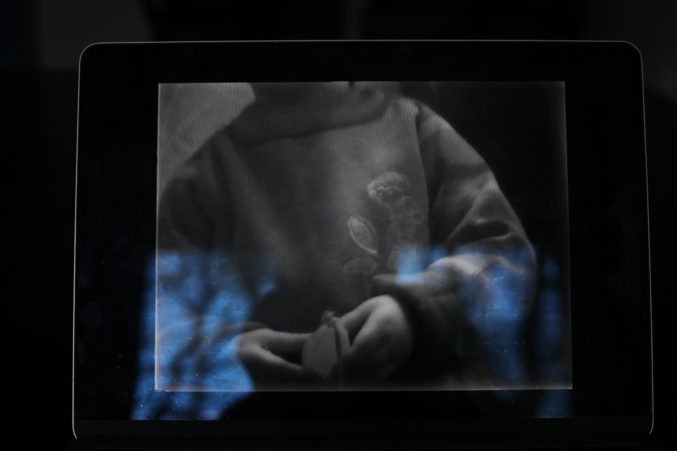Biography
Valentina Stepanova is a Moscow-born, Brussels-based multidisciplinary artist. Her practice challenges classical forms of documentary through an experimental approach to visual storytelling and an evocative use of mixed media. Memory and nostalgia, migration, and commemoration are core elements of her research and work. Stepanova’s practice aims to open new perspectives on identity, memory, and the sense of belonging, inviting the audience into immersive proposals for reflection and dialogue.
Stepanova’s works include the immersive installations Gorodets (The Museum of Muted Talks) (2016), Moshenka (2017-2018), and Facing Objects: Stillevens uit Linkeroever (2021-2022) in co-creation with musician and theater maker Niko Hafkenscheid. In 2017, she was invited to the IDFA Documentary Film Festival Amsterdam as part of the DocLab Academy, where she developed her first work, The Museum of Muted Talks.
Her works have been presented by workspacebrussels, A Two Dogs Company, Argos Centre for Media Art Brussels, KAAP, Nona Mechelen, Kanal Centre Pompidou Brussels, SALE Docks Venice, M HKA, and the Red Star Line Museum in Antwerp.
In residentie Telling yourself: autobiography as research (werktitel)
24.02.2025 – 02.03.2025

In her writing session “Telling yourself: autobiography as research” (working title), Valentina Stepanova aims to prepare a nuanced concept of what it means to want to ‘grafein’ (write) ‘autos’ (self) and ‘bios’ (life). This autobiographical fact, which gives the possibility to act as a witness, is something she wants to focus on in the near future. What are the conditions, the triggers for wanting to describe one’s own life? Which ingredients play a role in making it ‘worth telling’? And what forms can that telling take today in a multi-layered world and reality? How does that small story of the self also relate to the great hinges of history?
Like her previous work, this research is eminently transdisciplinary and focuses on multiformity and multi-layeredness. Two major themes are central to this writing session. The first aspect is the role of horror and violence in the formation of a worldview. Secondly, the focus is on how symbols and artefacts are used in imagery and propaganda. The underlying violence and mendacity of the stories in which Stepanova’s youth is steeped are the guiding principles in an attempt to discover new forms of autobiographical narrativity.


